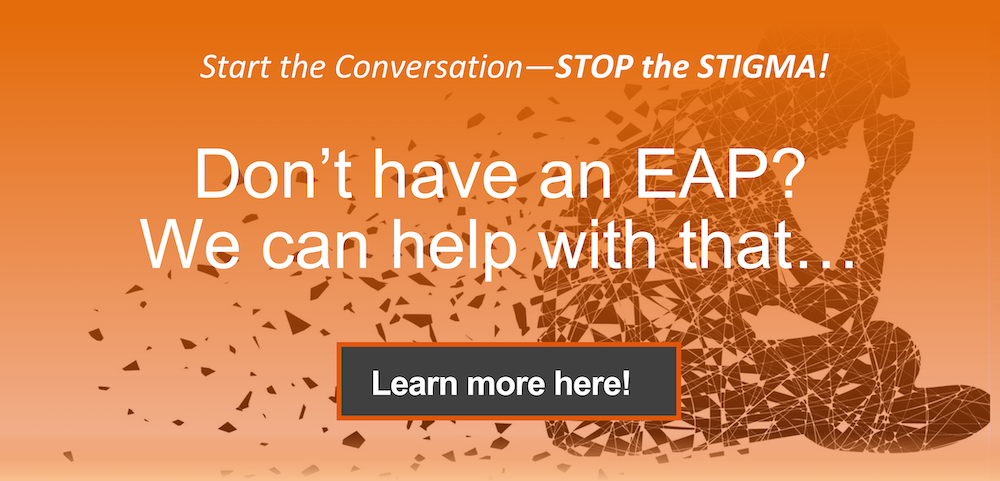“U.S. Employee Engagement Sinks to 10-Year Low.”
That’s the headline from a recent Gallup article, which also notes: “The declines since 2020 equate to about 8 million fewer engaged employees.”
These statistics reveal a troubling reality. Most people show up to work without feeling connected to what they do or where they work. They may complete tasks, attend meetings, and collect paychecks, but the spark is missing. And that absence costs everyone.
At its core, engagement is about the connection people feel to their work and their organization. When employees feel valued and supported, they bring more energy, creativity, and focus to their jobs. When that connection is missing, the results can be costly for both individuals and organizations.
Why Employee Engagement Matters
Gallup defines employee engagement as "the involvement and enthusiasm of employees in their work and workplace."
It's important to note that engagement is not the same as job satisfaction. An employee may be satisfied because the job provides a steady paycheck or convenient hours, but that doesn't necessarily mean they are engaged. Engagement goes deeper. It reflects a sense of purpose, pride, and commitment. Employees who are truly engaged care about the outcomes of their work and believe their contributions matter.
The cost of poor engagement is staggering. Gallup estimates that actively disengaged employees cost the global economy $8.9 trillion in lost productivity each year. That number reflects more than statistics; it represents stalled projects, higher turnover, and missed opportunities for growth.
When people are engaged, the picture looks very different.
- They tend to bring greater focus and energy to their responsibilities, which leads to better work and smoother collaboration.
- They are also more resilient during challenges, which helps teams maintain momentum when pressures rise.
- Engaged employees are far less likely to be job hunting, which saves organizations the steep costs of turnover. Recruiting, onboarding, and training replacements can drain both budgets and productivity, making stability an advantage.
- Engagement also improves the way employees interact with customers. Workers who feel connected to their roles are more attentive, more willing to solve problems, and more invested in building positive relationships.
What Drives Engagement?
Engagement grows out of daily experiences that shape how employees see their roles and their organization. Several factors consistently stand out as essential to building a workplace where people feel connected and motivated.
relationships with managers
The relationship employees have with their immediate supervisor is one of the strongest predictors of engagement. Managers set the tone through their communication style, availability, and willingness to support employee needs.
What does good management actually look like? Consider this scenario: An employee mentions during a one-on-one that they're feeling overwhelmed by conflicting priorities. A manager who builds engagement doesn't just nod sympathetically. They help the employee identify which tasks are most critical, discuss what can be postponed or delegated, and check in again a few days later to see if the situation has improved. This kind of responsive, practical support makes employees feel seen and valued.
recognition and appreciation
Pay and benefits matter, but recognition often carries more weight. McKinsey research has shown that companies can improve engagement by recognizing them through nonfinancial means.
Recognition doesn't require grand gestures. It can be as simple as a manager pausing during a team meeting to acknowledge someone who stayed late to help a colleague meet a deadline. It can be a quick email copying senior leadership to highlight an employee's creative solution to a recurring problem. It can be asking an employee to present their work to a broader audience because their approach is worth sharing.
When recognition becomes part of the culture, it reinforces motivation and strengthens commitment. The key is sincerity and specificity. Generic praise falls flat, but acknowledgment that demonstrates real awareness of someone's contribution resonates.
Purpose and meaning
Employees want to know that their work matters. When they see a clear connection between their daily tasks and the larger mission of the organization, they are more invested in the outcomes.
Take a customer service representative who spends hours each day answering routine questions. If they only see themselves as solving individual problems, the work can feel repetitive and draining. But if their manager regularly shares stories about how their support helped a struggling customer save their small business or enabled someone to care for a sick family member, the work takes on a different meaning. The tasks haven't changed, but the sense of purpose has.
This sense of purpose helps employees take pride in their work and motivates them to go beyond minimum expectations. Organizations that communicate a clear vision and invite employees to be part of it create stronger engagement.
Opportunities for growth
Training programs, mentorship opportunities, and challenging new assignments all signal that an organization is willing to invest in its people. Employees who see a path for growth are more likely to stay and to put their energy into developing skills that benefit both themselves and the organization.
Growth doesn't always mean climbing the ladder. Sometimes it means expanding skills laterally, taking on a special project outside normal responsibilities, or learning a new technology that makes current work more interesting. The important thing is forward motion and the feeling that stagnation isn't inevitable.
5 Ways to Support Engagement in Today's Workplace
Workplaces are evolving quickly, and engagement strategies need to keep pace. Several practices stand out in today’s environment.
1. Adapt to Hybrid and Remote Work
Engagement can slip when teams are dispersed. Casual office interactions need to be replaced with intentional ones. Leaders who rotate meeting times, invite remote input first, and focus on outcomes rather than activity help employees feel included and trusted.
2. Address Burnout
When exhaustion takes over, engagement disappears. Encouraging reasonable hours, promoting wellness resources, and modeling healthy boundaries show employees that their well-being is valued. Leaders who actually take time off set the best example.
3. Build a culture of trust
Trust forms the foundation of engagement. It shows up when leaders admit mistakes, keep promises, and make decisions transparently. Consistent actions build credibility and create a culture where employees feel safe investing their best effort.
4. Support Mental Health through eaps
Employee Assistance Programs (EAPs) provide confidential support for stress, family concerns, or mental health challenges that can affect engagement. Promoting awareness of these resources and normalizing their use signals that the organization cares about the whole person, not just job performance.
5. encourage employee voice
Employees are more engaged when they believe their ideas matter. Involving staff in problem-solving, inviting suggestions on workplace improvements, and acting on input helps build ownership and commitment.
Measuring and Sustaining Engagement
Organizations that take engagement seriously need ways to track it and keep it alive over time. But here's where many engagement initiatives fall apart. Leaders launch surveys with great fanfare, collect data, and then nothing changes. Employees notice, and the next survey gets even lower participation and more cynicism.
A few common practices can make the difference between a one-time initiative and an ongoing commitment.
- Pulse surveys. Short, focused surveys run monthly or quarterly give leaders a quick snapshot of employee sentiment. Keeping them under five questions, and acting on the results, makes them effective.
- Feedback channels. Suggestion boxes, anonymous platforms, or open forums work when employees see their input reviewed and acknowledged, even if not all ideas are adopted.
- Manager check-ins. Genuine conversations, not performance reviews, allow issues to surface early. Simple open questions such as “What’s been frustrating this week?” can build trust.
- Culture audits. Reviewing policies and practices against stated values helps uncover gaps. Transparency in promotions, reasonable meeting schedules, and consistent leadership behavior all reinforce engagement.
Sustaining engagement requires consistency. Employees notice when organizations follow through on their input and make meaningful changes. Over time, that responsiveness builds trust, and trust is the foundation of long-term engagement.
What Not to Do
Just as important as knowing what drives engagement is understanding what kills it. A few common mistakes can undo months of good work.
- Don't treat engagement as a one-time project. Survey results that sit in a drawer accomplish nothing. Engagement requires continuous attention, not an annual initiative.
- Don't ignore the feedback you receive. When employees raise legitimate concerns and hear only silence in response, they stop speaking up. That silence breeds resentment and disengagement faster than almost anything else.
- Don't mistake perks for engagement. Free snacks, ping-pong tables, and casual Fridays are nice, but they don't address the deeper factors that drive engagement. Employees will happily accept perks, but they won't stay for them if the fundamentals are missing.
- Don't rely solely on top-down communication. Engagement grows from authentic conversations at all levels, not from polished announcements from the executive suite.
Building Stronger Engagement at Work
Employee engagement isn't about programs or slogans. It's about the everyday connections people build with their managers, their teams, and their work. When employees feel heard, recognized, and supported, they bring more of themselves to what they do.
Organizations that commit to engagement see the results in stronger performance, greater stability, and healthier workplace cultures. But the real payoff is deeper than metrics. Engagement creates an environment where people want to stay, grow, and contribute.
When you partner with Ulliance, our Life Advisor Consultants are always just a phone call away to teach ways to enhance your work/life balance and increase your happiness. The Ulliance Life Advisor Employee Assistance Program can help employees and employers come closer to a state of total well-being.
Investing in the right EAP or Wellness Program to support your employees will help them and help you. Visit https://ulliance.com/ or call 866-648-8326.
The Ulliance Employee Assistance Program can address the
following issues:
• Stress about work or job performance
• Crisis in the workplace
• Conflict resolution at work or in one’s personal life
• Marital or relationship problems
• Child or elder care concerns
• Financial worries
• Mental health problems
• Alcohol/substance abuse
• Grief
• Interpersonal conflicts
• AND MORE!
References:
Improve Employee Engagement in the Workplace, Gallup
https://www.gallup.com/workplace/285674/improve-employee-engagement-workplace.aspx
Money Can’t Buy Your Employees’ Loyalty, McKinsey & Company
https://www.mckinsey.com/capabilities/people-and-organizational-performance/our-insights/the-organization-blog/money-cant-buy-your-employees-loyalty
Motivating People: Getting Beyond Money, McKinsey & Company
https://www.mckinsey.com/capabilities/people-and-organizational-performance/our-insights/motivating-people-getting-beyond-money
The ‘What’ and ‘Why’ of Employee Engagement, SHRM
https://www.shrm.org/topics-tools/news/employee-relations/what-why-employee-engagement
U.S. Employee Engagement Sinks to 10-Year Low, Gallup
https://www.gallup.com/workplace/610401/employee-engagement-sinks-10-year-low.aspx



.jpg?width=600&height=338&name=2Google%20Review%20NEW%20w%20click%20here%20button%20(1).jpg)
